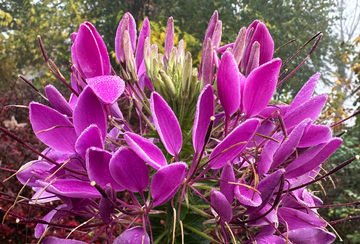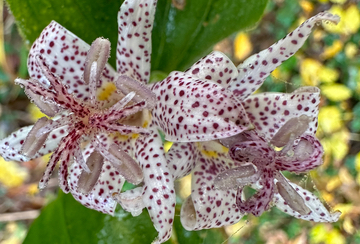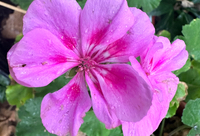
Late Bloomers

I've been trying to add color and bloom to the fall garden for years, with varying degrees of success, and in the process I learned the late gardening season offers a variety of options beyond mums, goldenrods, sedums, and grasses.
Beautiful annual and perennial plants, such as verbenas, speedwells, obedient plants, monkshoods, asters, turtleheads, heleniums, Japanese anemones, painted daisies, cannas, salvias, marigolds, heliotrope, and surprisingly, roses, bloom in the fall.
Anise hyssop, a personal favorite, lends its airy purple spears and scented foliage to fill the garden with delightful licorice fragrance at the lightest breeze.
South African belladonna lilies, with their elegant clusters of trumpet-shaped flowers, can be seen sprouting in lawns at this time, borne on tall, bare stalks.
There is no shortage of bloom in the early fall garden, and it lasts for a couple of months until its slow unwinding is overshadowed by the magnificent display of the turning leaves.

Very Late Bloomers

Behold the stars of the November garden, the truly special late bloomers.
Despite their delicate appearance, toad lilies, the charming little orchids of the north, are hardy to zone 2.
Their season doesn't begin until late September and they stay in bloom long after the first frost, when their frozen petals look like candied flowers.
Marigolds, calendulas, and snapdragons will continue blooming until December, and their colors become more vibrant as the temperature drops.
Cold season flowering baskets often feature violets and pansies. I spotted violets in bloom for Christmas at Denver's botanical garden, in freezing cold temperatures.
Chrysanthemums are everywhere in the fall for a very good reason: they will withstand a frost or two.
Would you like to see a shrub in bloom after the other shrubs and trees have lost their leaves? Plant witch hazel.
Lastly, we must mention these two late autumn garden staples, even though they're more veggies than flowers: the flowering kales and the decorative peppers.
